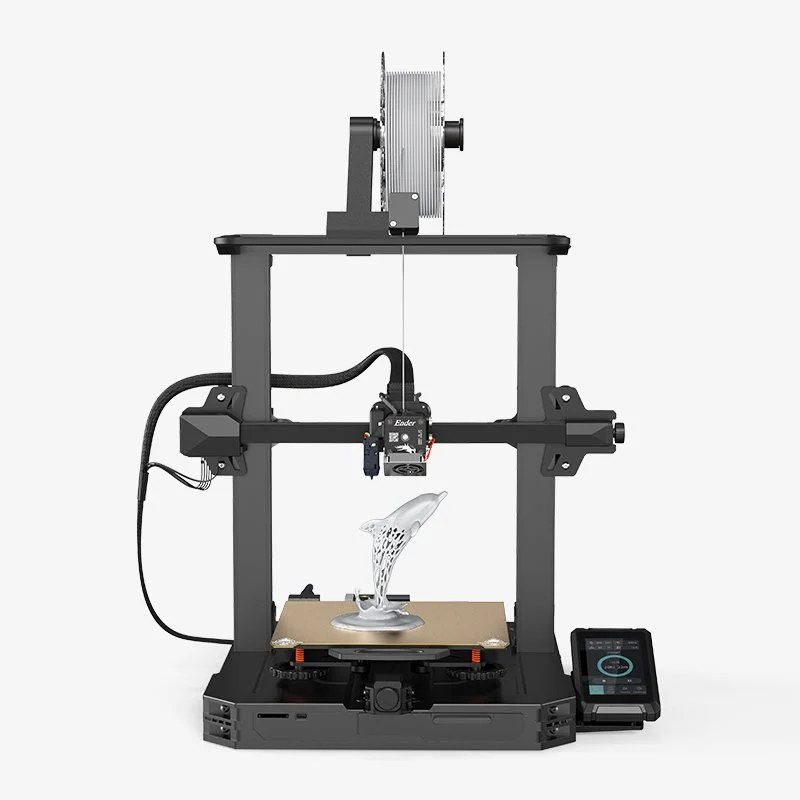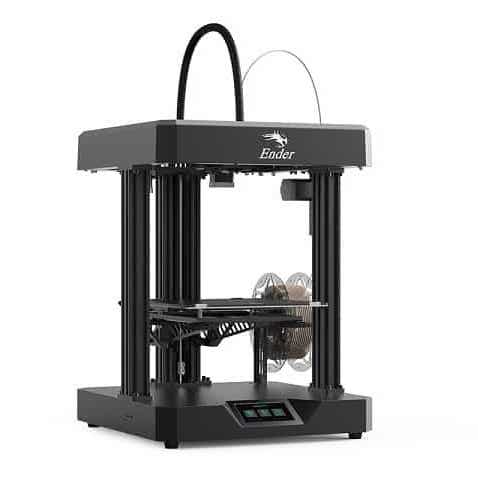Compare Ender 3 S1 PRO vs Ender 7
Comparison between the best 3D printers
Choose the best 3D printer at the best price. The cheapest 3D printers are here.
Buy a 3D printer here with 3D Fila.
 |
 |
|
| Model | Ender 3 S1 PRO[BUY Ender 3 S1 PRO] |
Ender 7[BUY Ender 7] |
| Printing Material | Filament | Filament |
| Buy Filament for Creality 3D Ender 3 S1 PRO | Buy Filament forCreality 3D Ender 7 | |
| Estimated price | $499,00 | $429,00 |
| Manufacturer | Creality 3D | Creality 3D |
| Release Year | 2022 | 2021 |
| Print Volume [mm] | 220x220x270 | 250x250x300 |
| Printer Size [mm] | 450x49x620 | 430x460x570 |
| Weight [kg] | 8,7kg | 17,2 |
| Power Loss Recovery | YES | YES |
| Enclosed printer | NO | NO |
| Bed Leveling | Automatic | Manual |
| Filament End Sensor | YES | YES |
| Bed type | Heated | Heated |
| Power supply system | Direct Drive | Bowden |
| Standard nozzle | 0,4 | 0,4 |
| Maximum Nozzle Temperature [°C] | 300 | 260 |
| Maximum Bed Temperature [°C] | 110 | 100 |
| Maximum printing speed [mm/s] | 150 | 250 |
| Filament holder | YES | YES |
| Camera for supervision | NO | NO |
| Recommended filaments | PLA, PETG | PLA, PETG, Tritan, Flex, ABS |
| Recommended slicers | Cura, Simplify, Slic3r | Cura, Simplify, Slic3r, IdeaMaker |
| Maximum Resolution [mm] | 0,1 | 0,1 |
| Processor | Creality CR-FDM V.2.4.S1_V101 32bits | |
| Display | Display touchscreen 4,3'' | Display touchscreen 4,3'' |
| Power Supply | 350 | 110/220V / 350W |
| Connectivity | SD | SD / USB |
| Operating systems | Windows, Mac, Linux | Windows, Mac, Linux |
| Date of registration in the system | 2022-10-11 | 2022-11-04 |
| Release date | 2022 | 2021 |
| Extra features | Creality's Ender 3 S1 PRO is an innovation in the Ender 3 series, featuring a Sprite Pro Extruder capable of reaching 300°C and dual lead screws on the Z axis, ensuring greater stability and print quality. Its PEI-coated print bed, combined with CR-Touch automatic leveling, provides excellent adhesion and ease of part removal. The user interface, via a 4.3-inch touchscreen, offers intuitive and efficient control, although it has some limitations regarding the handling of long file names and navigation. The well-designed extruder ensures effective cooling and handling of various filaments, although there may be a slight ghosting effect at high speeds due to its weight. This printer represents a balance between technological advances and operational challenges, remaining faithful to the quality expected of the Ender line. | Crealitys Ender 7 printer offers remarkable print speeds, utilizing CoreXY kinematics for precise and fast movement. With a 250x250x300mm build area, dual direct extruder, and custom hotend, the Ender 7 is capable of printing at high speeds, although quality may suffer on smaller prints. Assembly is relatively straightforward, but the machine is noisy and can get hot. Its true speed potential is most noticeable on larger prints, where it outperforms its competitors. |
| Support for multiple colors and materials (AMS and CFS) | NO | NO |
Notes * |
||
| Cost-benefit | 7 / 10 | 7 / 10 |
| Hardware | 2.8 / 10 | 2.4 / 10 |
| Tela | . | . |
| Print volume | 3 / 10 | 4 / 10 |
| Performance | 1 / 10 | 2 / 10 |
| [BUY Ender 3 S1 PRO] | [BUY Ender 7] |
Conclusion |
| In comparing the Creality Ender 3 S1 PRO and the Ender 7, both printers exhibit features that cater to different printing needs and preferences. The Ender 3 S1 PRO, priced slightly higher, showcases innovative technology, including a superior hotend capable of reaching higher temperatures, automatic bed leveling, and stability through dual lead screws. This printer is particularly suited for users who prioritize print quality and ease of use, especially with PLA and PETG filaments. Conversely, the Ender 7 offers a larger print volume and significantly faster printing speeds, making it an excellent choice for users who require efficiency and the capability to execute larger projects. However, this speed can come at a cost, as print quality may diminish on smaller items, and the machine tends to be noisier. Ultimately, the decision between these two models hinges on the user's specific needs. If print quality, material versatility, and user-friendly features are paramount, the Ender 3 S1 PRO stands out. For those prioritizing speed and larger print capabilities, the Ender 7 may be the preferable option. Both models offer commendable value, but their distinct strengths cater to different aspects of 3D printing, which should guide users towards the option that aligns more closely with their intended applications. |

